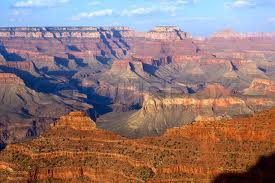|
2. Mechanisms for changes in the mean hydroclimate of Western North America under global warming Dynamical and thermodynamical causes of large-scale changes in the hydrological cycle over North America in response to global warming - PDFThe mechanisms of model-projected atmospheric moisture budget change across North America are examined in simulations conducted with 22 models from phase 5 of the Coupled Model Intercomparison Project. Modern-day model budgets are validated against the European Centre for Medium-Range Weather Forecasts Interim Re-Analysis. In the winter half year transient eddies converge moisture across the continent while the mean flow wets the west from central California northward and dries the southwest. In the summer half year there is widespreadmean flowmoisture divergence across thewest and convergence over theGreat Plains that is offset by transient eddy divergence. In the winter half year the models project drying for the southwest and wetting to the north. Changes in the mean flowmoisture convergence are largely responsible across the west but intensified transient eddymoisture convergence wets the northeast. In the summer half year widespread declines in precipitationminus evaporation (P-E) are supported bymean flow moisture divergence across the west and transient eddy divergence in the Great Plains. The changes in mean flow convergence are related to increases in specific humidity but also depend on changes in the mean flow including increased low-level divergence in the U.S. Southwest and a zonally varying wave that wets theNorthAmerican west and east coasts inwinter and dries the U.S. Southwest. Increased transient eddy fluxes occur even as low-level eddy activity weakens and arise from strengthened humidity gradients. A full explanation of North American hydroclimate changes will require explanation of mean and transient circulation changes and the coupling between themoisture and circulation fields. REFERENCES
|
 EASM2: LINKING NEAR-TERM FUTURE CHANGES IN WEATHER AND HYDROCLIMATE IN WESTERN NORTH AMERICA TO ADAPTATION FOR ECOSYSTEM AND WATER MANAGEMENT EASM2: LINKING NEAR-TERM FUTURE CHANGES IN WEATHER AND HYDROCLIMATE IN WESTERN NORTH AMERICA TO ADAPTATION FOR ECOSYSTEM AND WATER MANAGEMENT | |
| Lamont-Doherty Earth Observatory of Columbia University 61 Route 9W Palisades, NY 10964
| |
|
| |